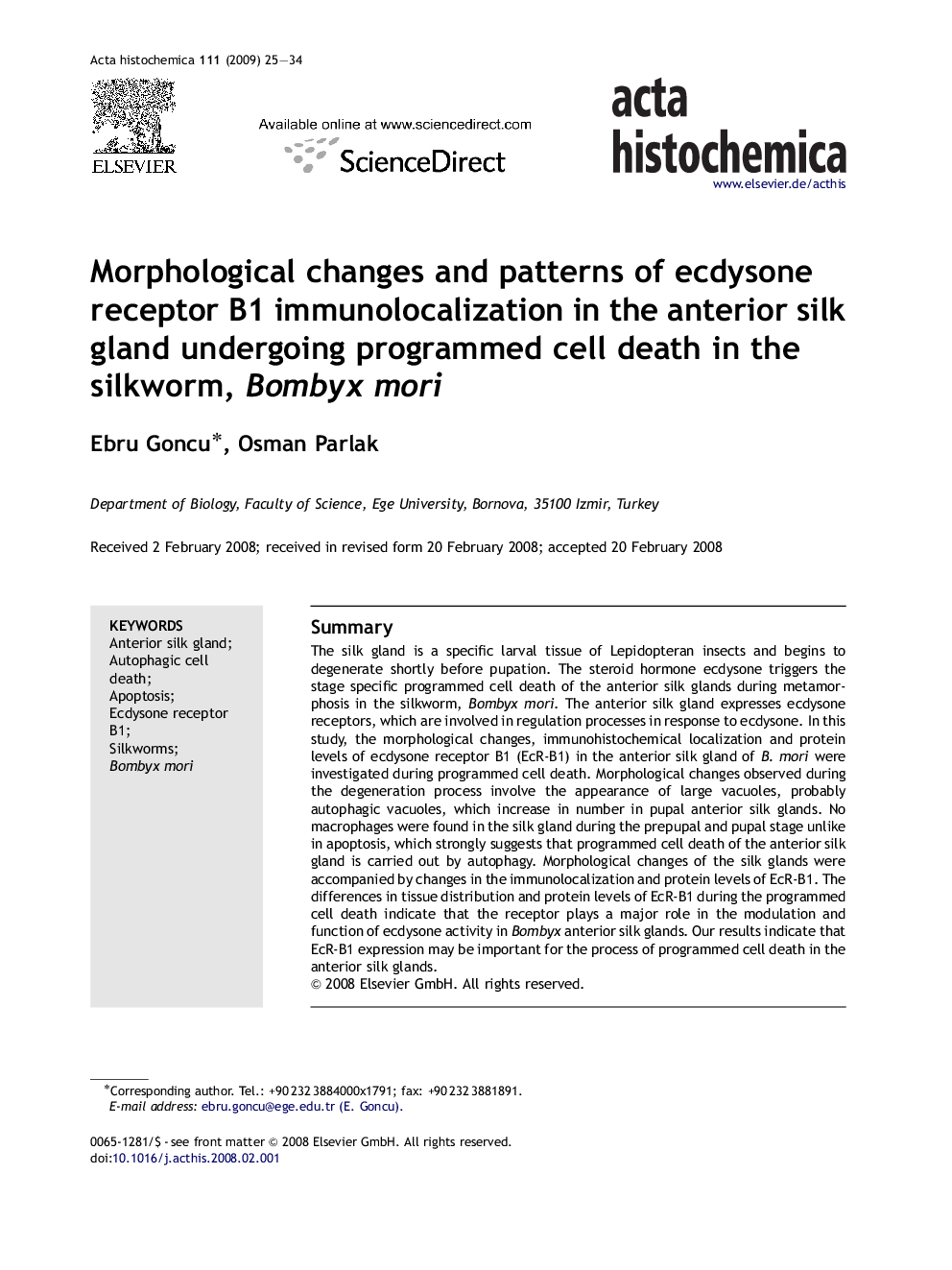| Article ID | Journal | Published Year | Pages | File Type |
|---|---|---|---|---|
| 10747240 | Acta Histochemica | 2009 | 10 Pages |
Abstract
The silk gland is a specific larval tissue of Lepidopteran insects and begins to degenerate shortly before pupation. The steroid hormone ecdysone triggers the stage specific programmed cell death of the anterior silk glands during metamorphosis in the silkworm, Bombyx mori. The anterior silk gland expresses ecdysone receptors, which are involved in regulation processes in response to ecdysone. In this study, the morphological changes, immunohistochemical localization and protein levels of ecdysone receptor B1 (EcR-B1) in the anterior silk gland of B. mori were investigated during programmed cell death. Morphological changes observed during the degeneration process involve the appearance of large vacuoles, probably autophagic vacuoles, which increase in number in pupal anterior silk glands. No macrophages were found in the silk gland during the prepupal and pupal stage unlike in apoptosis, which strongly suggests that programmed cell death of the anterior silk gland is carried out by autophagy. Morphological changes of the silk glands were accompanied by changes in the immunolocalization and protein levels of EcR-B1. The differences in tissue distribution and protein levels of EcR-B1 during the programmed cell death indicate that the receptor plays a major role in the modulation and function of ecdysone activity in Bombyx anterior silk glands. Our results indicate that EcR-B1 expression may be important for the process of programmed cell death in the anterior silk glands.
Related Topics
Life Sciences
Biochemistry, Genetics and Molecular Biology
Biochemistry
Authors
Ebru Goncu, Osman Parlak,
